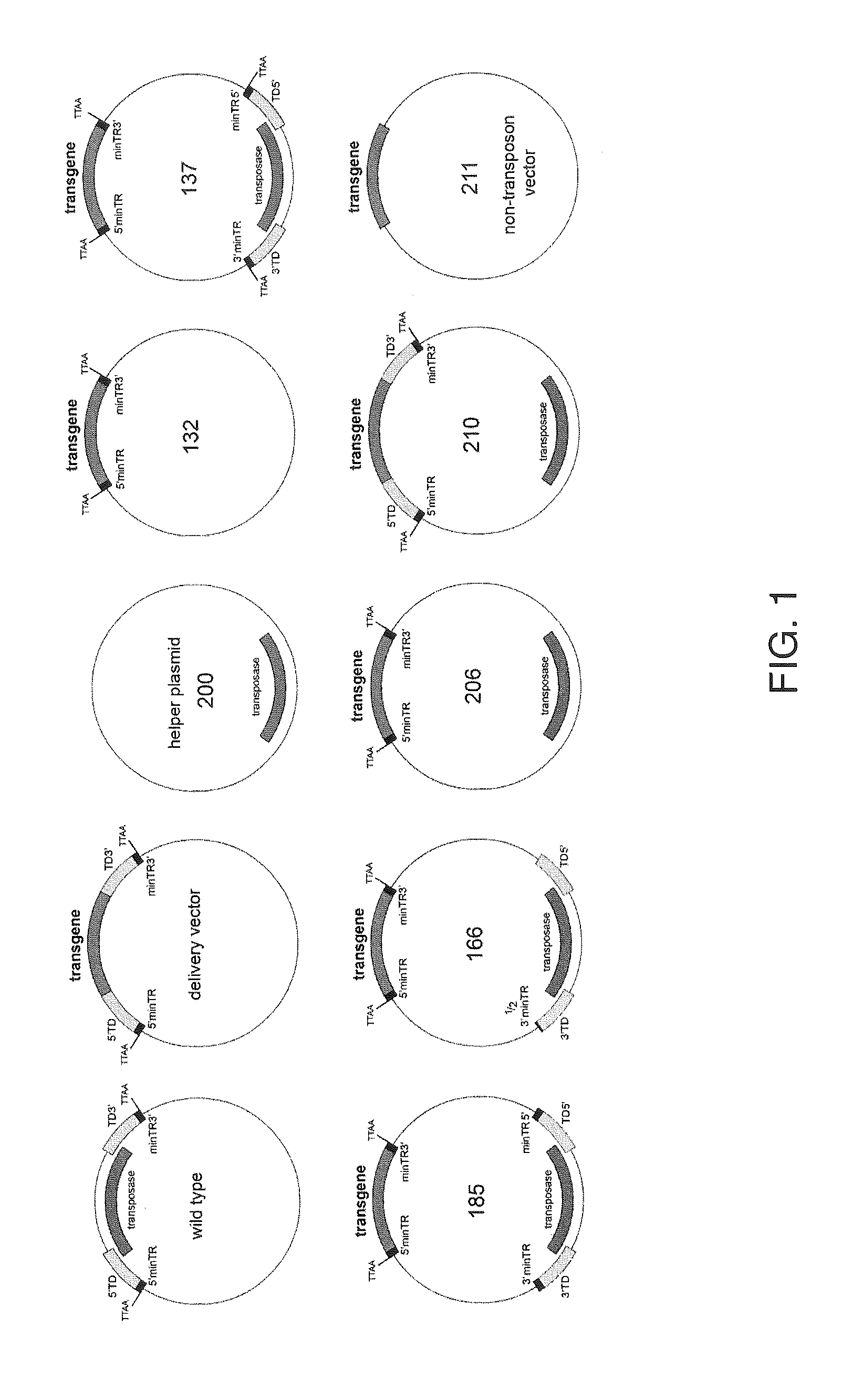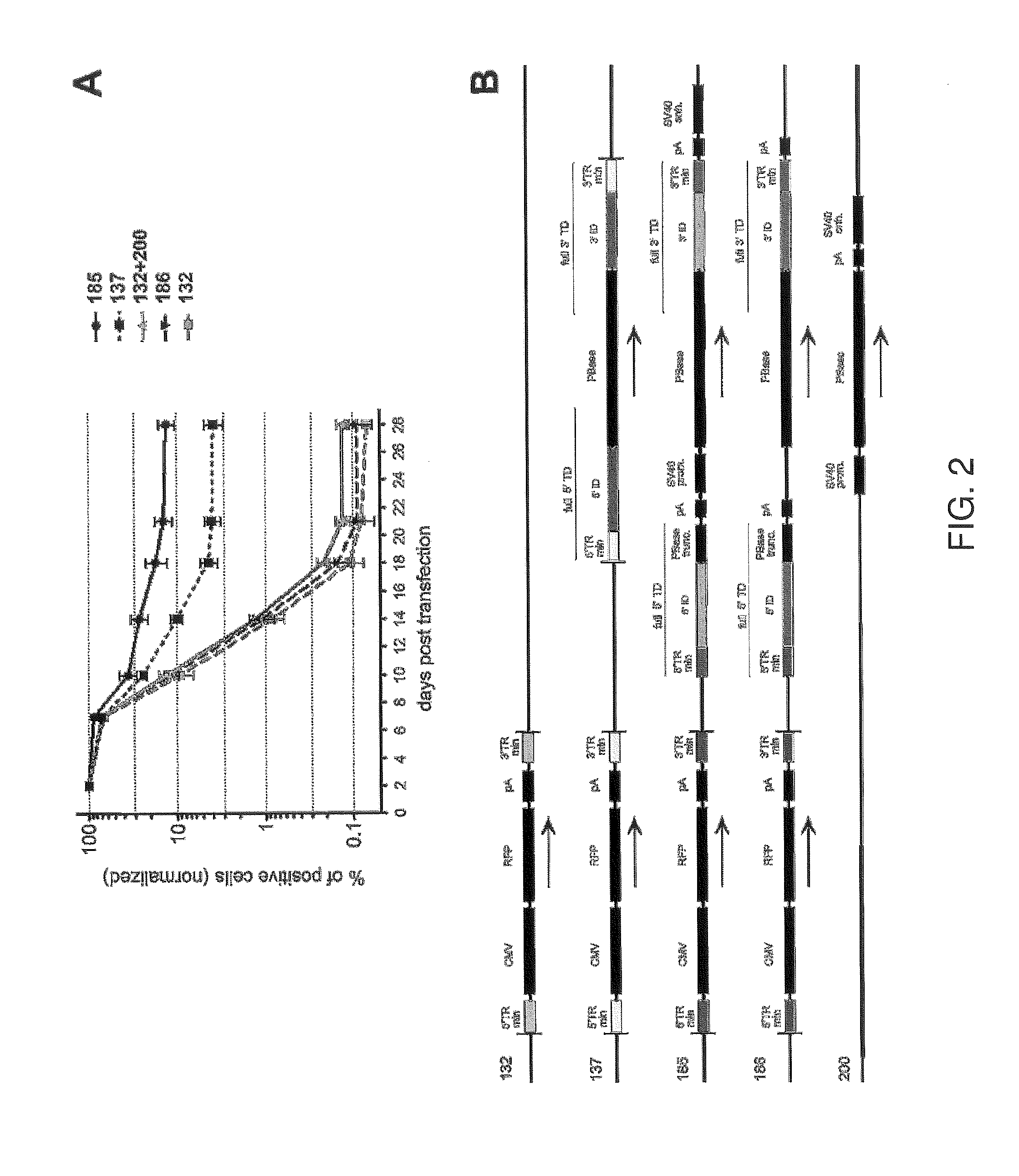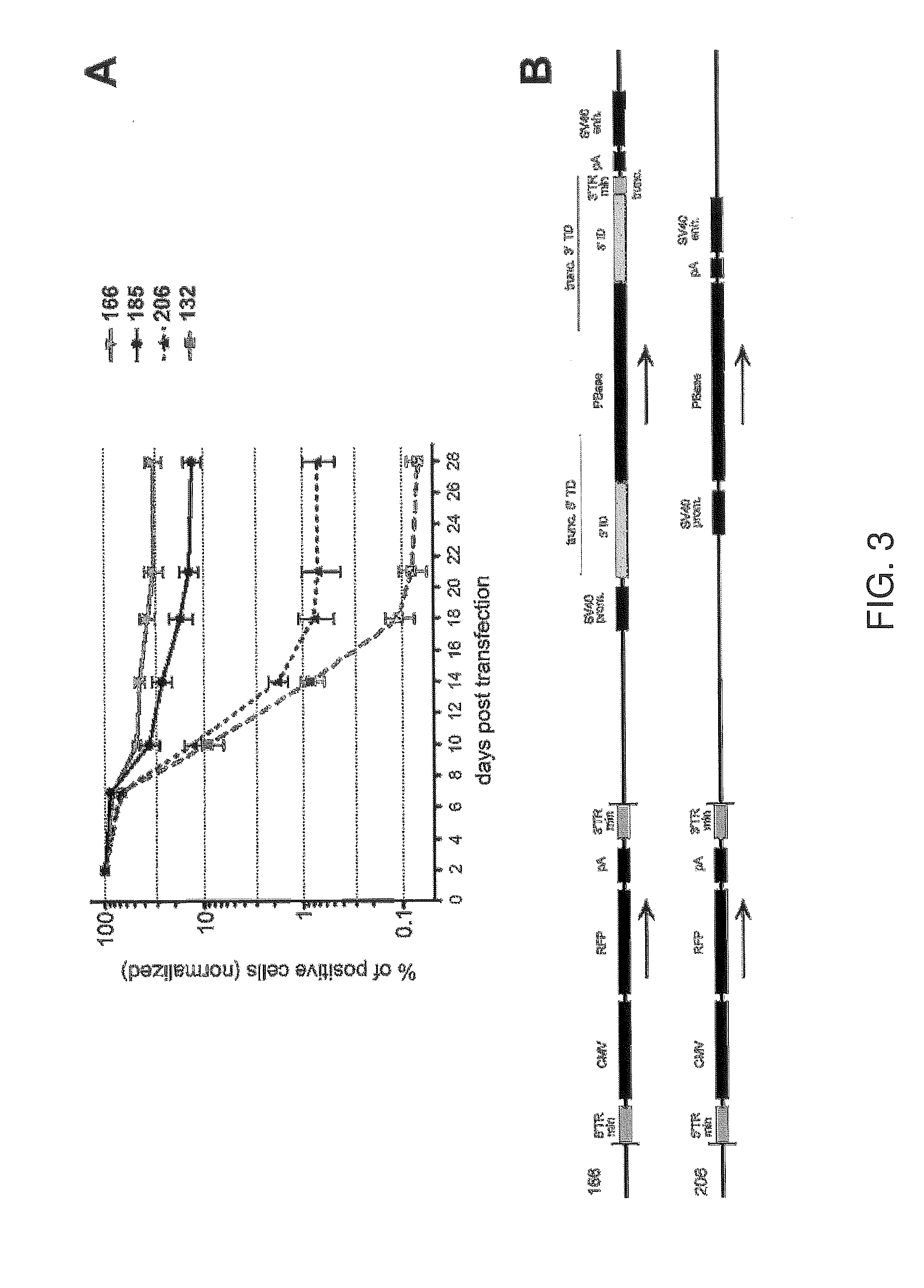Minimal piggybac vectors for genome integration
a genome integration and vector technology, applied in the field of genome integration, can solve the problems of limiting the amount of nucleic acid that can be delivered into cells, the size constraints of dna condensing reagents and virus-mediated strategies, and the method can have certain limitations, so as to reduce the amount of extra (non-encoding) dna incorporated, reduce the size of the overall length, and improve the effect of encoding efficiency
- Summary
- Abstract
- Description
- Claims
- Application Information
AI Technical Summary
Benefits of technology
Problems solved by technology
Method used
Image
Examples
example 1
Modified piggyBac Vectors
[0068]In this example, we describe vectors in which most of the wild-type piggyBac sequences within the terminal domains have been removed from the transposon (delivery cassette) without a significant decrease in transposition efficiency. This was achieved by including a second piggyBac sequence (modified, to make it undeliverable) in the same plasmid. This design decreased the size of the required terminal domains within the delivered gene cassette of piggyBac vectors from about 1,500 base pairs (Li et al., Insect Mol. Biol. 14:17-30 (2005)) to just 98 base pairs, the shortest sequence that allows stable transgene integration for any viral or non-viral gene delivery system that has been described to date. By removing these sequences from the delivered gene cassette, they are no longer incorporated into the host genome. This reduction in the length of DNA sequences incorporated into the target cell genome not only decreases the risk of insertional mutagenesi...
example 2
[0083]Schematic maps of the vectors used in this example are illustrated in FIG. 6A. In plasmid-185, the full-length terminal domains of the second transposon were separated from the minTRs of the RFP delivery cassette by two linkers of 254 bp and 3354 bp. While the second (full size) transposon demonstrated a helper effect on the integration of the RFP delivery cassette in this configuration, we hypothesized that shortening these distances would make the helper part more accessible for the transposase and further increase transposition efficiency of the vector. To test this supposition, we constructed two additional plasmids. Plasmid-196 had the same transposon components as plasmid-185, but the long terminal sequences of the helper part were rearranged. They were relocated and positioned in closer proximity to the transposable part of the vector. In this new plasmid, the distances between the minTRs and the long terminal domains were reduced to only 17 base pairs (compared to 254 ...
example 3
[0085]Schematic maps of the vectors used in this example are illustrated in FIG. 7A. In the previously tested plasmids, the delivered (CMV-RFP) and helper (SV40-transposase) operons were aligned in the same orientation as the upstream 5′ terminal domain and the downstream 3′ terminal domain. We investigated whether a change in operon orientation would affect transposition efficiency. We constructed and tested four additional plasmids similar to plasmid-185, -166, -196 and -146, but with the delivery cassette oriented in an opposite direction to the rest of the plasmid (196R, 146R, 166R, 185R).
[0086]We tested the transposition efficiency of these “reverse” vectors with the original “forward” oriented vectors in HEK-293 cells. Two days after transfection with corresponding plasmids, RFP-positive cells were sorted and then analyzed for RFP expression 28 days later as described previously. Plasmid-146 and -146R were also co-transfected with the helper plasmid expressing the piggyBac tra...
PUM
 Login to View More
Login to View More Abstract
Description
Claims
Application Information
 Login to View More
Login to View More - R&D
- Intellectual Property
- Life Sciences
- Materials
- Tech Scout
- Unparalleled Data Quality
- Higher Quality Content
- 60% Fewer Hallucinations
Browse by: Latest US Patents, China's latest patents, Technical Efficacy Thesaurus, Application Domain, Technology Topic, Popular Technical Reports.
© 2025 PatSnap. All rights reserved.Legal|Privacy policy|Modern Slavery Act Transparency Statement|Sitemap|About US| Contact US: help@patsnap.com



